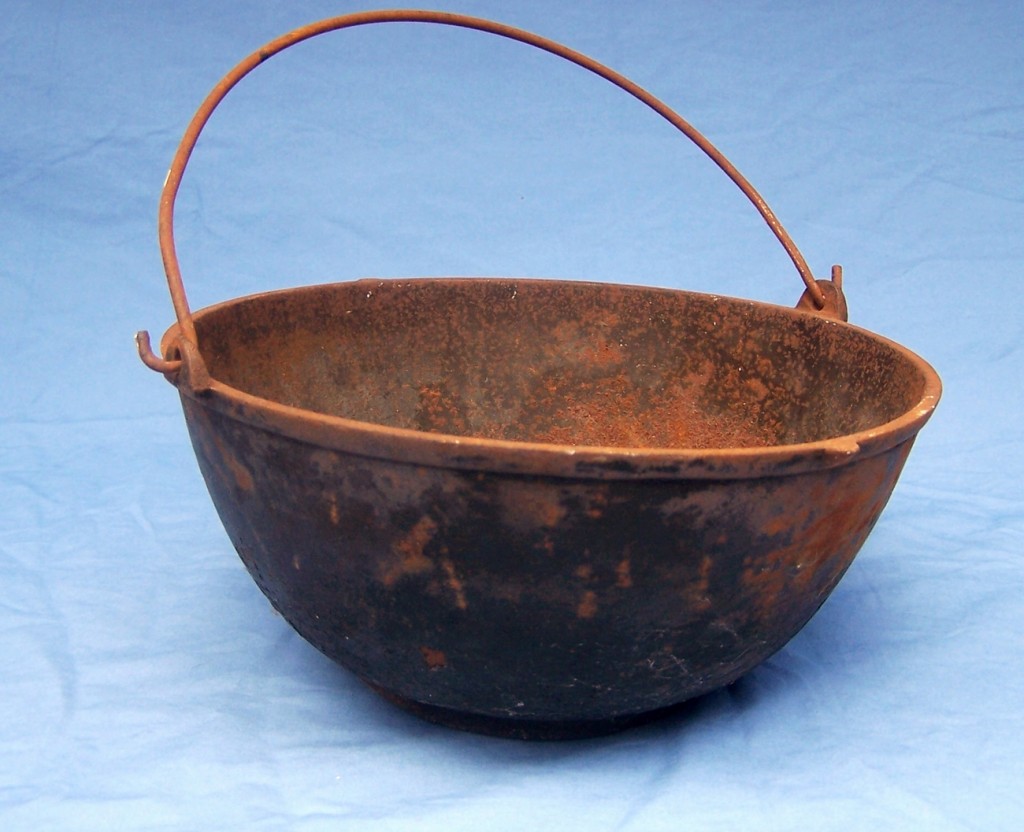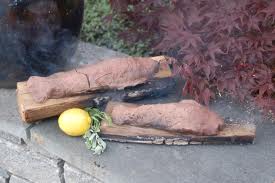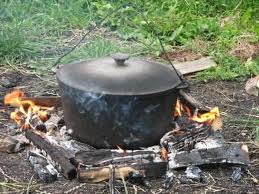When Europeans began to migrate into tracts of North America what was the one thing they had the native Americans wanted more than anything else? Rifles? Axes? Horses? No, none of those. The one thing the “Indians” coveted the most was the metal cooking pot. That tells you two or three things. First that eating was more on their minds than fighting, and that sometimes historical facts can get lost when history is rewritten. It also suggests that squaws had more to say in matters than one is led to think.
The metal cooking pot may not be up there with the invention of the wheel, but it’s close. It probably safe to say there are few kitchens in the world without at least one metal cooking pot. We rightfully worry today about having enough food to feed humanity. A decade without new pots to replace old ones could be as devastating as lack of food. Cooking without a pot is not impossible, but it ain’t easy, either. And perhaps that is why every home should have at least one cast iron pot or pan. Treated well they literally last for generations. George Washington’s grandmother, Mary Hewes, thought so much of her cast iron pot and frying pan she willed them to her daughter Mary Ball, Washington’s mother.
One facet of foraging is learning how to cook wild foods without pots and pans, such as dry roasting roots, wilting greens, and baking in various kinds of pits. That’s what cooking was before there were pots. Boiling food was not a handy option. Rocks had to be heated and then put into wooden bowls or skin bags. Sometimes skin bags of water were suspended over fires. As long as they have water in them they don’t burn through. Boiling was not a prime culinary technique. That suggests that food that needed to be boiled were not prime eats either, such as pokeweed. Indeed, the Alabama Indians referred to pokeweed as the plant white men ate (as the Alabamians did not eat it.) I suspect boiling was limited to making medicine which was more important at times than food thus worth the energy.
Metal pots revolutionized cooking, and the prime material for several hundred years was cast iron. Some will argue, when all things are considered, it is still the prime cooking material. It’s inexpensive, cooks well, and will outlive whoever currently owns it. Many a cast iron skillet has been passed down from mother to daughter to grand daughter and beyond. And as cooking without pots is a skill to learn, so, too, is cooking with cast iron and an open fire. That is why I like cast iron cookware: I can use it in my kitchen, with my fireplace when the power goes out yet again, or when camping.
Cooking wild foods in cast iron over an open fire is how many of our ancestors cooked even a century ago. There’s past in the pan. A chuck wagon wasn’t a chuck wagon without cast iron pans. Colonists sailing to American carried their cast iron cookery with them. We all have ancestors who cooked with cast iron. From about 1865 to WWII nearly every bride, no matter how poor she was, could count on a least a cast iron skillet and dutch oven for a wedding present. It was essential to life.
I cook with cast iron and will admit to collecting cast iron cookware, from the no name to the coveted, but I usually find mine at garage sales, flea markets and recycle centers. Indeed, I recently got a Griswold dutch oven lid in a salvage yard for $1.41. While that might not mean much to many readers it was one heck of a find. Of all my cast iron cookery I think I bought only two items new, and that was years ago.
In my mind foraging and cast iron pans complement each other, two methods of eating, long ago without pots and pans and then with metal pots, an evolution of food before the chemist got involved. And I must admit, there is very little in the way of modern cookware in my kitchen that I’d like to pass on. But my mother has a couple of my grandmother’s cast iron muffin pans. Some day they will be mine. And as I have no children I will pass them on to much younger cousins. They will have a pan their great great grandmother used. Up against history like that, teflon doesn’t have a chance.
To read about cast iron cookware click here. To read about cooking before pots and pans click here and or here.





